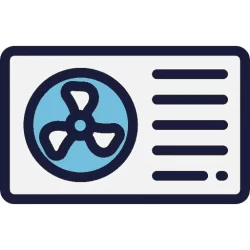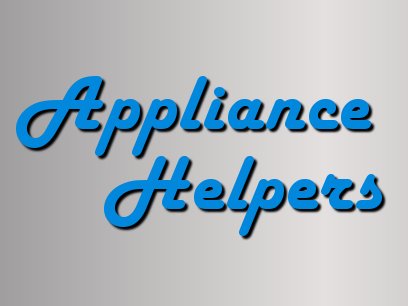Appliance Types
- Air Conditioner
- Automobile
- Chainsaw
- Circular Saw
- Dishwasher
- Drills
- Dryer
- Drywall Screw Gun
- Furnace
- Gas Fireplace
- Gas Grill
- Gas Patio Heater
- Grinder
- Heat Pump
- Impact Driver
- Impact Wrench
- Microwave
- Nailer
- Orbital Sander
- Pool Heaters
- Powerwall
- Range
- Refrigerator
- Television
- Washer
- Water Heater
Appliance Brands
- A.O. Smith
- AccuCold
- Admiral Craft
- AGA
- Airrex
- Amana
- Ambiance
- American Range
- American Standard
- American Water Heaters
- Aquacal
- Armstrong
- Asko
- Avanti
- Avenlur
- Azure
- Beko
- Bellfires
- Bertazzoni
- Blackstone
- Blaze
- Blomberg
- BlueStar
- Bosch
- Bradford White
- Bromic
- Bryant
- Cafe
- Calcana
- Capital
- Carrier
- Char-Broil
- Char-Griller
- Chrysler
- Coates
- Coleman
- Comfortmaker
- Commercial Chef
- Continental
- Cosmo
- Cove
- Crown Verity
- Dacor
- Daikin
- Danby
- Danfoss
- DaVinci
- DCS
- Deco
- DeWALT
- Ducane
- Dyna-Glo
- Dyson
- EcoSmart
- Electrolux
- Element4
- Empava
- Equator
- Eurodib
- European Home
- Everdure
- Farberware
- Fhiaba
- FibroPool
- Fire Sense
- Fisher
- FiveStar
- Flare
- Flash Furniture
- Focus
- Ford
- Forno
- Forte
- Frigidaire
- Fulgor Milano
- Gaggenau
- GE
- General Motors
- GlowBrand
- Goodman
- Grundig
- GSW
- Haier
- Hayward
- Heatstar
- Heil
- Hestan
- Hisense
- Hitachi
- Hotpoint
- iio
- Ilve
- Impecca
- Ingignia
- Insignia
- JennAir
- John Wood
- Keeprite
- Kenmore
- Kenyon
- KitchenAid
- Kucht
- La Cornue
- Lennox
- LG
- Liebherr
- Lifetime
- Lion
- Luxaire
- Lynx
- Magic Chef
- Marvel
- Maytag
- McQuay
- MicroFridge
- Midea
- Miele
- Migali
- Monogram
- Montigo
- Mr Heater
- Napoleon
- Navien
- Nexgrill
- Noritz
- Panasonic
- Patio Comforts
- Payne
- Pentair
- Perlick
- PITT
- Premier
- Raypak
- Real Fyre
- Regency
- Reliance
- Rheem
- Rinnai
- Roma
- Ruud
- Saber
- Samsung
- Schwank
- Sharp
- Smeg
- Solas
- Sony
- Spartherm
- Speed Queen
- StaRite
- State Water Heaters
- Stiebel Eltron
- SubZero
- Summerset
- Summit
- SunGlo
- SunPak
- Sunpentown
- SunStar
- Superiore
- Takagi
- TCL
- TEC
- Tempstar
- Tesla
- Thermador
- Thor Kitchen
- Toshiba
- Town and Country
- Toyota
- Traeger
- Trane
- Twin Eagles
- U-Line
- Unique
- Vaillant Group
- Valor
- Verona
- Victory
- Viessmann
- Viking
- Vizio
- Weber
- Westinghouse
- Whirlpool
- Whynter
- York
- ZLINE
Article Categories
- Air Conditioners
- Appliance Care
- Appliance News
- Dishwasher News
- Drying Machines
- Furnaces
- Gas Fireplaces
- Microwaves
- Pool Heaters
- Refrigerators
- Stoves - Ranges
- Tips and Tricks
- Washing Machines
- Water Heaters
More Articles

Heat Pump Troubleshooting
A heat pump is a device that transfers heat from one location to another by using mechanical energy. It can be used for both heating and cooling purposes. In its most common form, a heat pump works by extracting heat from a lower-temperature source (such as the outside air, ground, or water) and transferring it to a higher-temperature destination (such as the inside of a building). This process is achieved by using a refrigeration cycle, which consists of several components, including a compressor, condenser, expansion valve, and evaporator. During the heating mode, the heat pump absorbs heat energy from the outside source and releases it inside the building, effectively raising the temperature. In the cooling mode, the process is reversed, and the heat pump removes heat from the indoor air and releases it outside, resulting in a cooling effect. Heat pumps are considered energy-efficient because they can provide heating or cooling using significantly less electricity compared to traditional heating and cooling systems. This is because they transfer heat rather than generating it directly. Additionally, heat pumps can be used in conjunction with other heating or cooling systems, such as electric resistance heaters or gas furnaces, to provide more efficient and cost-effective heating solutions. There are different types of heat pumps available, including air-source heat pumps, ground-source (geothermal) heat pumps, and water-source heat pumps. The choice of heat pump depends on factors such as climate, available heat sources, and the specific heating or cooling requirements of the building.
When troubleshooting a heat pump, there are several common issues you can check for. Here are some steps you can follow.
Check the power supply: Ensure that the heat pump is receiving power. Check the circuit breaker or fuse box to make sure the circuit is not tripped or the fuse is not blown. If the power supply seems fine, move on to the next step.
Thermostat settings: Check the thermostat settings to ensure it is set to the desired temperature and operating mode (heating or cooling). Make sure the thermostat is on and functioning properly. If the thermostat is not working correctly, it may need to be replaced.
Air filters: Dirty or clogged air filters can restrict airflow and affect the heat pump's performance. Check the air filters and clean or replace them if necessary. This should be done regularly as part of routine maintenance.
Outdoor unit: Inspect the outdoor unit (condenser) of the heat pump. Ensure that it is not blocked or obstructed by debris, vegetation, or snow. Clear any obstructions and make sure there is sufficient space around the unit for proper airflow.
Refrigerant levels: Low refrigerant levels can indicate a leak in the system. If you suspect a refrigerant leak, it is best to call a professional HVAC technician to locate and repair the leak and recharge the system with the correct amount of refrigerant.
Check for unusual sounds or odors: Unusual sounds, such as grinding, squealing, or rattling, can indicate mechanical issues. Strange odors may also be a sign of a problem. If you notice any unusual sounds or odors coming from the heat pump, it's advisable to contact a professional for further investigation.
Reset the system: In some cases, resetting the heat pump can resolve minor issues. Turn off the power to the heat pump, wait for a few minutes, and then turn it back on. This can help clear any temporary glitches or faults.
If these troubleshooting steps do not resolve the issue or if you are unsure about performing any of these tasks, it is recommended to contact a qualified HVAC technician for professional assistance. They have the expertise and tools to diagnose and repair heat pump problems effectively.




